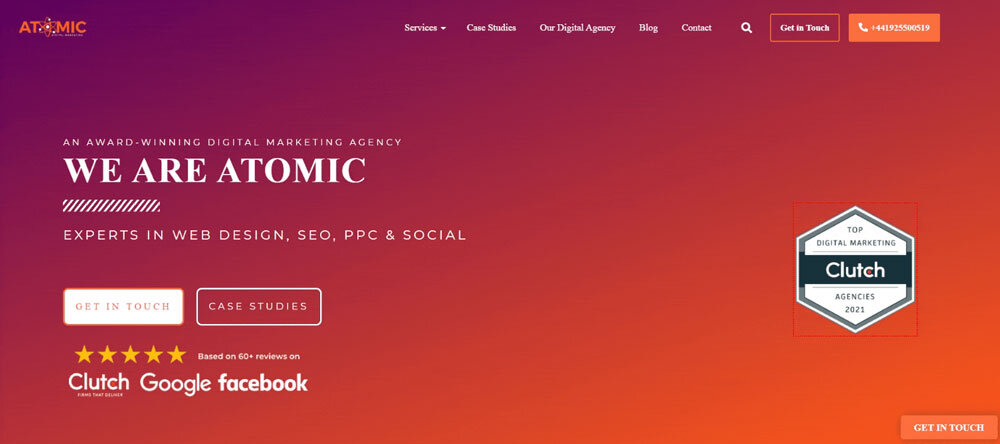Google’s June 2021 Update Is Set To Be One Of The Most Important Yet, As Page Experience For Users Becomes A Major Ranking Factor
First announced in November 2020, Google’s most significant update for some time launches in June 2021. What makes the new update momentous is the new ranking factors which Google is adding to its search algorithm that could potentially reduce the traffic of most websites in its database.
If you haven’t prepared your site for the June update you need to make it a top priority before it’s too late.
In total, there are three new ranking factors being added, they’re been referred to as Core Web Vitals and their focus is on evaluating the page experience your website provides to its visitors. Sites with a healthy Core Web Vitals score are expected to receive a small rankings boost whilst the organic traffic of pages with poor Core Web Vitals is expected to tumble.
What are the three Core Web Vitals?
1. Largest Contentful Paint (LCP)

The first area to focus on is LCP, the name may sound overly techie but it’s actually pretty simple, what it measures is how many seconds it takes from someone clicking a link to your site to the above the fold content becoming visible.
What LCP is really interested in is the loading time of your site. These are the benchmarks set by Google by in which LCP should load:
- 2.5 seconds or less is ideal
- 2.5-4 seconds needs improvement
- Over 4 seconds is poor
2. First Input Delay (FID)
Where LCP is measuring how long it takes for content to become visible, First Input Delay assesses how long it takes for the interactive functionality of the pages to load. To put it simply: how long it takes for your website to start working.
Standard interactions would include, clicking a link on the site, using the search function, or even entering text into a form field.
Google’s recommended loading times for FID shows how serious it is about website owners getting this one right:
- 1 second or less is ideal
- 1-3 seconds needs improvement
- Over 3 seconds is considered poor
Now, you might have started to notice a pattern with Core Web Vitals: Google deems a super-fast loading time as integral to the user experience. And that’s what the upcoming update is really all about.
Google wants to provide the best possible browsing experience to its users. Including LCP & FID into its algorithm proves this because they’re not vanity metrics. They’re the best tools that web analysts have to estimate how real-life people interact with websites.
If your site is noticeably slow to load you could lose a big chunk of your organic traffic.
3. Cumulative Layout Shift (CLS)
Cumulative Layout Shift is different from the first two Core Web Vitals in the sense that it’s not directly related to page speed. CLS measures how stable your page is upon loading. Pages with elements that jump around the browser and move before users can click on them provide a poor user experience.
Quantifying CLS can be difficult, this is the formula that is most commonly used: layout shift score = impact fraction x distance fraction. Here is Google’s recommend CLS score:
- 0.1 or less is ideal
- Up to 0.25 needs improvement
- Over 0.25 seconds is considered poor
What Causes Poor Core Web Vitals Performance?
In general, it’s down to coding errors made during the development process of your webpages, and poor website management or maintenance. The good news is that everything is fixable!
Here’s a quick overview of the major problems that need to be fixed to improve your Core Web Vital scores:
Largest Contentful Paint & First Input Delay
- Non-essential Javascript code & CSS being loaded before above the fold content
- A common problem for WordPress websites that have a lot of plugins. This however does not mean they can’t be quick! Check out our WordPress Speed Optimisation Services.
- Too many lines of unused code which is taking up processing power
- Lack of video/image compression or lazy loading
- Slow web hosting
- Preload browser caching for returning visitors
Cumulative Layout Shift
- Define the page structure and element size within the page coding
- Add a large file size element below the fold
If you need help to optimize your site, take a look at Atomic’s Page Speed Optimization service.
How To Check Your Website’s Core Web Vitals
Google PageSpeed Insight
Google offers a free service that will scan your website and provide you with a list of the errors which are slowing down your site (most of the time it’s the ones listed above).
The service will also give your website a speed score from 0-100 with 100 being the best. A score of 50-60 is considered to be the average for all websites. This is going to be a problem for the majority of website owners because to pass the Core Web Vitals test, sites are going to need a score of 90 or above.
If your site scores below 90 you’re risking a big loss in organic traffic once the update comes into effect in June.
Google Search Console
PageSpeed Insight is a great tool but it only scans one page at a time. For a full list of the pages on your website which have Core Web Vitals issues, login to Google Search Console and select the option from the menu on the left-hand side.
Conclusion & Solution
If your site is slow to load or unstable during the loading process your site could be penalised during the upcoming update.
Protect your site now by using Atomic’s Page Speed Optimization Service. A completely new service that we’ve launched to help website owners retain their organic traffic and ensure their site meets Google’s standards.
Above is the real PageSpeed Insight scores from Atomic Digital Marketing’s homepage before and after implementing our speed optimization skills.
In truth, our website is heavy on graphics and elements which traditionally slow down websites LCP & FID. By optimizing our website code we’ve managed to get a perfect speed score without having to add more plugins (which is the problem for slow sites in the first place).
Let us do the same for your business, so like us, you’ll have nothing to worry about when June arrives.
Visit our page on PageSpeed Optimization to get more information on applying Core Web Vitals to your site.



